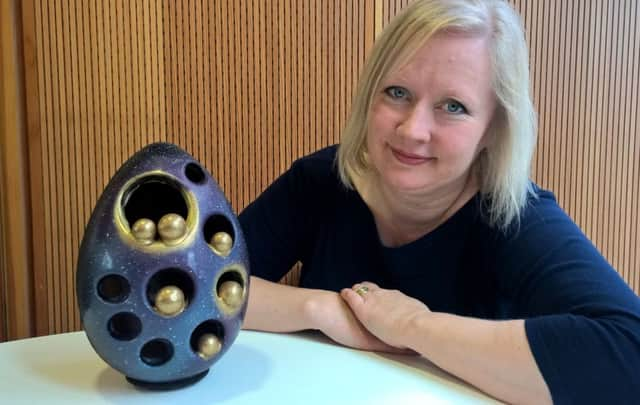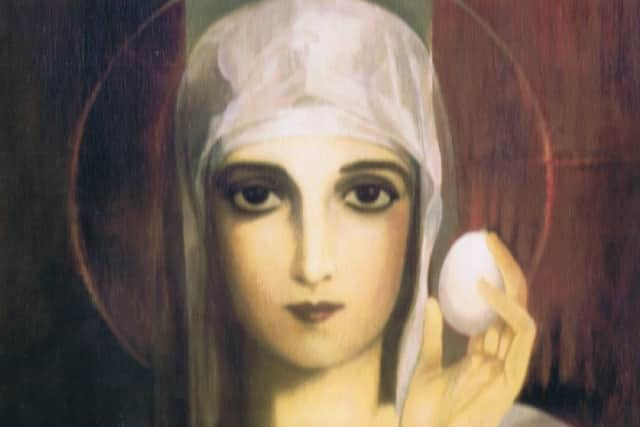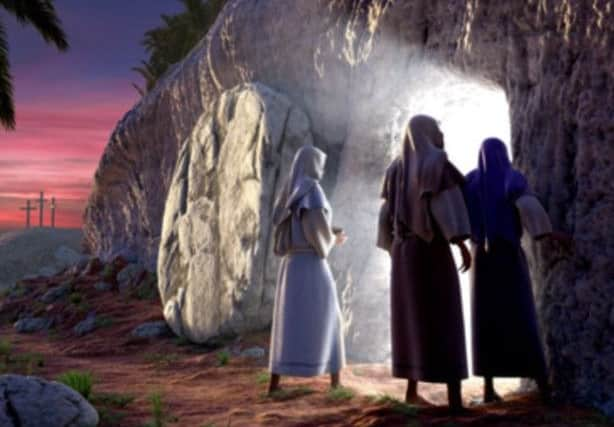What is the real symbolism of Easter eggs?


It’s a question that’s been uttered a lot in recent weeks, as supermarket aisles began to fill with colourful chocolate treats in every size.
It does seem a little odd that Easter, which sees Christians celebrate the resurrection of Jesus Christ from the dead, be marked with the exchange of Cadbury’s eggs. But according to Dr Minna Shkul, co-director of the Hidden Perspectives project in the Sheffield Institute for Interdisciplinary Biblical Studies at the University of Sheffield, there is a good reason behind this seemingly unrelated symbolism.


Advertisement
Hide AdAdvertisement
Hide Ad“Chocolate eggs may seem like the indulgent embodiment of secular, post-Christian Easter in the 21st century, which has become about treats rather than traditions,” says Dr Shkul.
“However, the symbolism of eggs and their place in spring time celebrations has long roots, reflecting ancient beliefs, both pagan and Christian, of new life and celebration.” And according to Dr Shkul, the mystery of the egg - with its hidden life yet to emerge - was commonly associated with the creation of the universe in ancient thought. Ancient Egyptians believed that gods came forth from eggs of creation, and in Hindu mythology, Hiranyagarbha, a ‘golden womb’ or ‘golden egg’, was the source of creation. There are similar myths from Greek, Japanese, Chinese, and Oceanic cultures, as well as Nordic tales which speak of the world being created from six eggs of gold. In many ancient legends the egg, or its yolk, was associated with the sun, and the shell formed the dome of sky, earth and water.
“In Christian tradition, eggs have multiple meanings,” Dr Shkul adds.
“They were thought to symbolise the stone on the tomb of Christ, as well as Christ bursting forth from the grave.


Advertisement
Hide AdAdvertisement
Hide Ad“There is also a common association between sacred femininity and eggs. According to Eastern Church traditions, Mary Magdalene brought cooked eggs to share with the other women at the tomb of Jesus, but ‘lo and behold, when she met the Risen Christ at the empty tomb, the eggs miraculously turned blood red. Hence images of Mary with an egg are common in Orthodox iconography.
“Eggs were also part of ritual eating and pagan celebrations at springtime, which could be another explanation as to why they are found in the Easter story.”
Easter eggs became chocolatey in 19th century Europe, with the first British dark chocolate eggs crafted by Cadbury in 1875. Chocolate eggs were originally often solid chocolate, and later replaced by hollow eggs containing surprises, as representation of the new life and hope within.
Dr Shkul adds: “Easter eggs now come in every shape - I’ve seen a few square ones - and size! They’re a symbol of life-giving and, along with bunnies and chicks, are a great representation of springtime.”


Advertisement
Hide AdAdvertisement
Hide AdThe story of the Easter Bunny is thought to have become common in the 19th century, around the time that rabbits, which usually give birth to a big litter of babies, became a symbol of new life. In many countries, the legendy goes that the Easter bunny lays, decorates and hides eggs as they are also a symbol of new life, though in Switzerland, Easter eggs are delivered by a cuckoo, and in parts of Germany, by a fox.
So the link isn’t as tenuous as it may first appear.
Dr Shkul smiles: “If you think about it, chocolate is a treat, and an aphrodisiac, which is quite fitting for any celebration of life – eternal or otherwise.”
And according to Dr Meredith Warren, also a member of the Sheffield Institute for Interdisciplinary Biblical Studies, the confusion over Easter doesn’t end with chocolate eggs.


Dr Warren says: “Jesus’s crucifixion is probably one of the most familiar images to emerge from Christianity and Good Friday, one of the holiest days in the Christian calendar, marks this event. But what do we actually know about the way Jesus was killed?
Advertisement
Hide AdAdvertisement
Hide Ad“Jesus’ death by crucifixion is one of the things that all four canonical Gospels agree on - Matthew, Mark, Luke, and John - although each tells the story a little differently.
“The Gospel of Peter specifically describes how, after Jesus died, the nails were removed from his hands, while none of the Gospels in the New Testament mention the nails. In Christian tradition, nailing the limbs to the cross is assumed, but Romans did not always do this, instead sometimes tying them in place with rope.
“Curiously, this fixation on the nails persists, despite the fact that the earliest gospels make no mention of Jesus being nailed to the cross.”